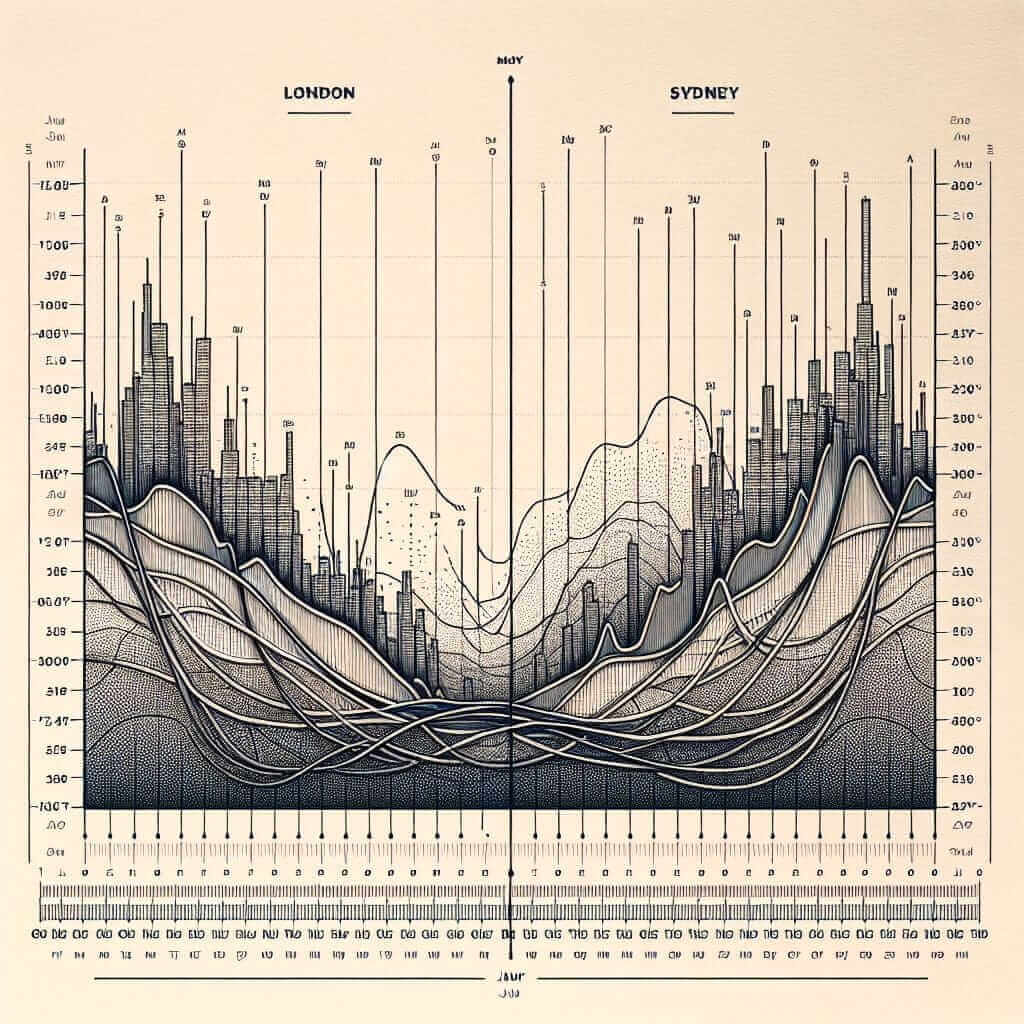As an IELTS instructor with over two decades of experience, I’ve guided countless students toward success in the IELTS writing exam. Task 1, in particular, often feels daunting for test-takers. This comprehensive guide will equip you with the knowledge and strategies to confidently tackle IELTS Writing Task 1 and achieve a high band score.
Understanding IELTS Writing Task 1
IELTS Writing Task 1 assesses your ability to analyze visual data and present your observations in a clear, well-structured, and accurate report. You will be presented with a visual input, which could be:
- A graph: Line graph, bar graph, pie chart
- A chart: Flowchart, process diagram
- A table: Presenting numerical data
- A map: Showing geographical changes over time
Your task is to describe the key features and trends presented in the visual data, using your own words and avoiding personal opinions or interpretations.
Mastering the Art of Writing Task 1
Here’s a step-by-step approach to effectively tackle IELTS Writing Task 1:
1. Analyze the Visual Input:
Carefully examine the visual:
- Identify the type of visual (graph, chart, table, map).
- Understand the axes, labels, units of measurement, and legend.
- Determine the overall trend or purpose of the visual.
2. Plan Your Response:
Organize your thoughts before you start writing:
- Introduction: Paraphrase the topic of the visual in your own words.
- Overview: Highlight the main trends or key features.
- Body Paragraphs: Describe specific details and support them with data from the visual. Aim for 2-3 body paragraphs, each focusing on a different aspect of the data.
3. Craft Your Response:
Use a formal and academic writing style:
- Vocabulary: Employ a range of vocabulary related to describing trends, comparisons, and changes. Avoid informal language and contractions.
- Grammar: Use accurate grammar and sentence structures. Pay attention to subject-verb agreement, tenses, and articles.
- Structure: Follow a clear and logical structure. Use cohesive devices (linking words and phrases) to connect your ideas smoothly.
4. Proofread for Accuracy:
Allocate time to review your work:
- Check for any grammatical errors, spelling mistakes, or punctuation errors.
- Ensure that your data interpretation is accurate and consistent with the visual.
Example from an IELTS Writing Task 1
Let’s analyze a sample task and a model response:
Task:
The graph below shows the average daily temperatures in London and Sydney over a year.
*(Insert a line graph here showing the average daily temperatures for London and Sydney over 12 months.)

Model Response:
The line graph illustrates the average daily temperatures in two major cities – London and Sydney – over a twelve-month period.
Overall, Sydney experiences significantly warmer temperatures compared to London throughout the year. Sydney’s temperatures peak in December and January, reaching around 25 degrees Celsius, while London’s warmest month is July, with temperatures averaging just above 18 degrees Celsius.
In contrast, London’s coldest month is January, with temperatures dropping to an average of 5 degrees Celsius. Sydney’s temperatures remain relatively mild throughout the year, with the lowest average temperature of around 15 degrees Celsius occurring in July.
It is evident that Sydney enjoys a warmer climate with smaller temperature fluctuations throughout the year, while London experiences distinct seasons with colder winters and milder summers.
Tips for Success:
- Practice Regularly: Familiarize yourself with different types of visuals and practice writing responses under timed conditions.
- Expand Your Vocabulary: Learn synonyms for commonly used words when describing trends (e.g., increase, decrease, fluctuate, stable).
- Focus on Accuracy: Ensure your data interpretation is precise and avoid making assumptions not supported by the visual.
- Seek Feedback: Have your writing assessed by an experienced IELTS instructor for personalized feedback and areas for improvement.
Conclusion:
Mastering IELTS Writing Task 1 requires a combination of analytical skills, language proficiency, and effective writing techniques. By following this comprehensive guide and dedicating time to practice, you can confidently approach this section of the IELTS exam and achieve your desired band score. Remember to analyze the visual carefully, plan your response strategically, and write with clarity and accuracy.